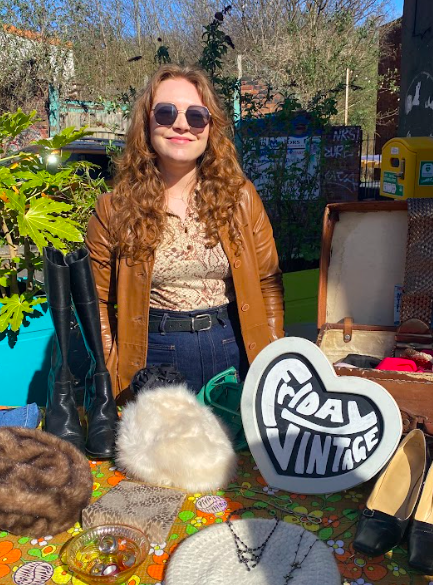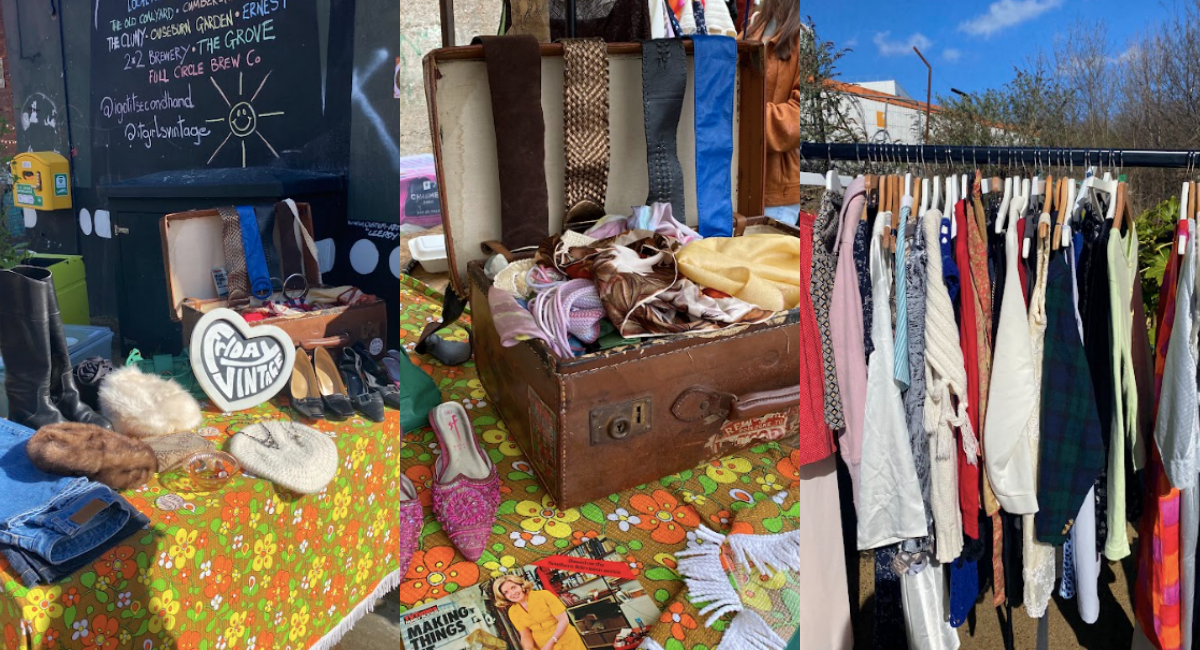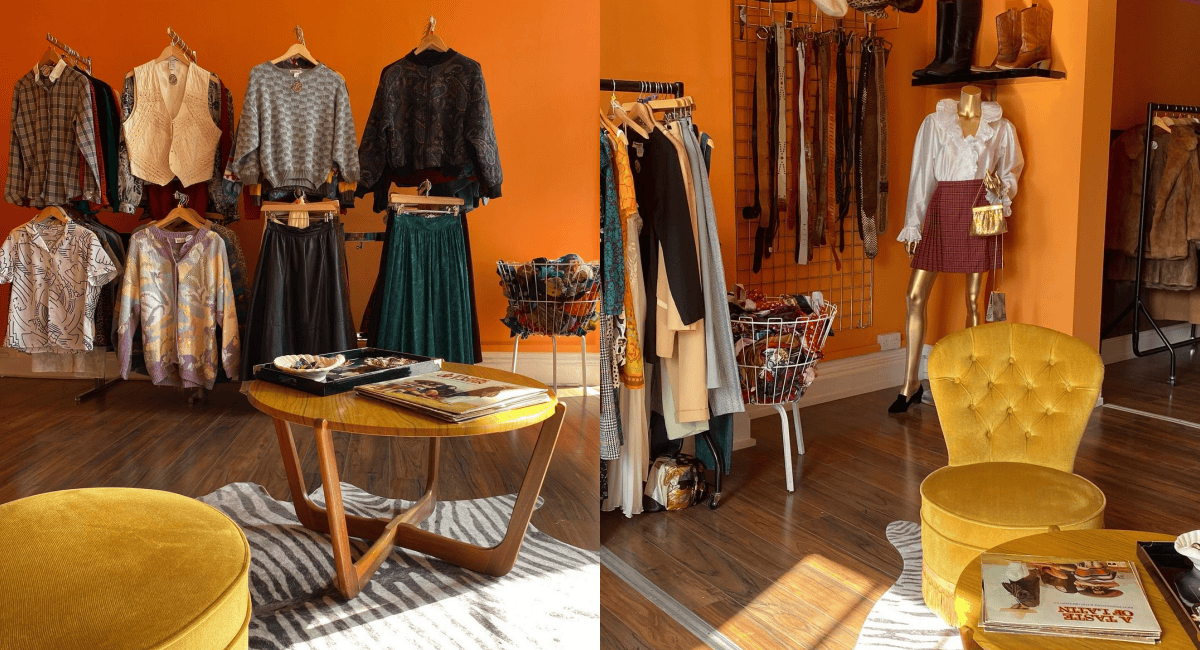Which brings us to the next question—where do these second hand sellers get their clothes and how do they operate? In this article, we get up close and personal with Laura Jackson, the proud owner of Friday Vintage, a small independent business in Newcastle Upon Tyne.
In the last few years, the act of thrifting or buying second hand goods has grown to be increasingly popular. A survey by market research company Kantar, as reported in Drapers found that the number of UK consumers buying second-hand clothing rose by 5.7%, to 41.3% in the 52 weeks (about 12 months) to March 7, 2021. Almost a fifth of those surveyed, 18.1%, said they shop for second hand fashion regularly.
According to Scientific American, it can be deduced that the practice of second hand shopping has also risen to fame as society has become more aware of the environmental impact of fast fashion. Not to mention, buying second hand is undoubtedly much cheaper and if you’re lucky, you might even find something vintage and unique.

Laura Jackson and her Friday Vintage store during a pop-up in Ouseburn,Newcastle Upon Tyne ( Source: Charmaine Shaharin)
Which brings us to the next question—where do these second sellers get their clothes and how do they operate? In this article, we get up close and personal with Laura Jackson, the proud owner of Friday Vintage, a small independent business.
“Since my early teen years, I’ve always loved trawling through charity shops with my Mum, looking for unique pieces and as I got older and started to experiment with clothing more, people would sometimes ask me where I got my clothes from, and I was always proud to say that it was bought second hand and often at a bargain price,” says Laura.
“I’ve been complimented on having a good eye in a charity shop multiple times, so to put my skills into good use, I started selling pieces of second hand clothing during my time in university to help pay my rent, and a year later, during the lockdown, I started my Instagram @igotitsecondhand, which opened the doors to the thrifting community online and becoming invested in the sustainable aspect of buying second hand, especially as a seller.
“The practice of buying second hand clothing as a buyer and a seller is different. If you’re merely just an avid buyer of second hand clothing, your main concern would be trying to find a unique piece in the pile but if you’re a seller, you’d be thinking about what distinctive pieces should be added to the pile that would be appealing to others,” Laura says.

The variety of accessories and clothing at Friday Vintage (Source: Charmaine Shaharin)
When asked how Laura sources her clothes, she claims there’s no straightforward answer for her.
“I currently get my clothes from here, there and everywhere. You might see me at a car boot sale, house clearances or even searching online on sites like Depop and eBay.
“Oftentimes, if I see a piece of clothing in another second hand store that needs fixing up, I’ll do so and give it new life. I’m currently handpicking from vintage wholesalers too. The most important thing for me is curating pieces that are good quality,” Laura says.
Not to mention, Laura also expresses how second hand sellers do not get enough credit for the time and thought they spend making sure their clothes are ethically sourced and how it’s a tedious process that’s not talked about often in the pre-loved community.
“When it comes to buying second hand, the conversation often shifts about how it’s much more accessible and environmentally friendly, and society would always find means and ways to glamourise the sustainable aspect of it,” Laura explains.
“As much as buying second hand plays a big deal for the environment, the well-being of second hand sellers like me also counts too, especially when it comes to finding good pieces that are ethically sustainable and attractive to sell.
“More often, we also must deal with difficult people which include buyers that are hagglers for cheaper prices. A recent haggling encounter that I’ve had was when a younger customer asked the price of a skirt, and when I told her it was £20, she was quick to say, ‘No thank you’ and loudly exclaimed to her friends how she could find something cheaper elsewhere.
“I really believe my prices are reasonable and I would never want to charge a ridiculous price for a piece, and as a small business, I need to pay myself, or I’m not going to be able to curate pieces together and offer that as a service.
“True, she will find something cheaper elsewhere, but what you are paying for is more than just the fabric itself. I put a lot of effort into curating, sourcing, washing, repairing, styling, and photographing the pieces, and I think there’s worth in that,” Laura explains.
The idea of owning her personal second hand clothing business has always been a long time dream for Laura and she wishes to continue this passion but also hopes the public would understand the scope of being a second hand seller takes a lot of time and effort, and it shouldn’t be classified as a “lazy job”.

Laura’s new Friday Vintage Store at Hippy Green, Newcastle Upon Tyne ( Source: Igotitsecondhand on Instagram)
Now to take Friday Vintage to the next level, Laura will be opening her very own physical store in the centre of Newcastle, at Old Eldon Square, in early summer.
“This is a really big step in my career as a reseller, and I’m really excited for this opportunity to be another creative individual paving the way for selling second hand and vintage clothes,” said Laura.
“With my new store, I only hope to meet more talented people in the fashion industry, curate more timeless and stylish clothing to be sold and most of all, maybe even educate others about how fashion resellers are the unsung heroes for both the sustainable and fashion industry.”
